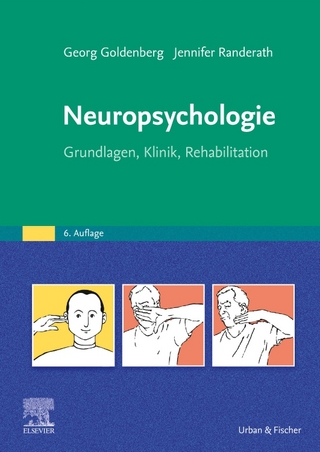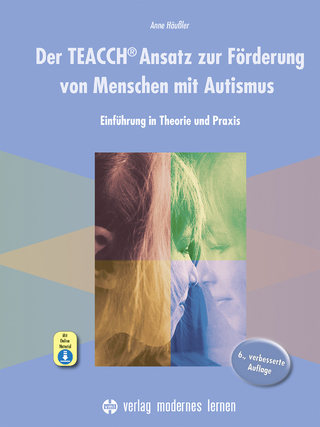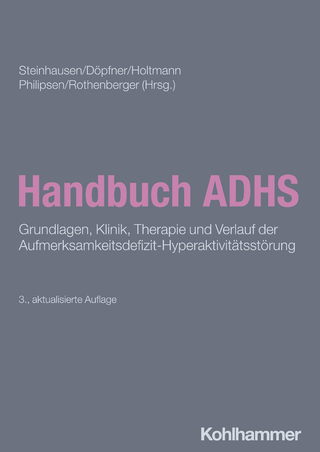
Addictions Counseling Today
SAGE Publications Inc (Verlag)
978-1-4833-0826-5 (ISBN)
Winner of the 2020 Canadian Counselling and Psychotherapy Association (CCPA) Counselling Book Award
Enlightening and practical, Addictions Counseling Today invites students into the heart of addictive thinking, offering first-person accounts of what it is like to experience different addictions. The text covers the range of addictions from alcohol, drug abuse, and nicotine to various process addictions, including sex, internet, gaming, social media, and gambling. Also included are the various theories and models of addiction, with a unique chapter on the neuroscience of addiction. Focusing on the new DSM-V classifications for addiction with an emphasis on CACREP and treatment, this provocative, contemporary text is an essential reference for both students and practitioners wanting to gain a deeper understanding of those with addiction.
Online Resources
Free PowerPoint® slides with video for instructors are available with this text.
Kevin Alderson, PhD, is Professor Emeritus of counseling psychology from the University of Calgary. He has been a counselor for 40 years and a registered psychologist since 1986. He is serving a 3-year term as president-elect, president, and past president, respectively, for the College of Alberta Psychologists, the body that regulates psychology in Alberta, Canada. Dr. Alderson is a professional member of the Association for Addiction Professionals, and currently sits on the editorial board for the Journal of Alcoholism, Drug Abuse & Substance Dependence and the Austin Journal of Drug Abuse and Addiction. He also holds membership in the American Counseling Association, the American Psychological Association, the Canadian Counselling and Psychotherapy Association, and the Canadian Psychological Association. Since 2008, Dr. Alderson has been the editor-in-chief of the Canadian Journal of Counselling and Psychotherapy, which is the only national peer-reviewed journal in the counseling and psychotherapy field in Canada. He currently works half-time for Yorkville University as their director for a proposed online doctor of counseling and psychotherapy degree program. Dr. Alderson has authored nine previous books and several scholarly articles and book chapters. He completed a MSc in clinical, school, and community psychology from the University of Calgary, and a PhD in counseling psychology at the University of Alberta. Dr. Alderson is married and is the father of two adult children. Outside of counseling, he enjoys racket sports, dancing, hiking, camping, and weight training.
Preface
Acknowledgments
For Instructors
About the Author
Chapter 1. Introduction
Introduction
Definitions
History of Drugs, Addictions, and Addiction Counseling
Labeling Theory
Repeating Harmful Addictive Behaviors
Treatment and “Maturing Out”
Becoming a Certified Addiction Counselor
Roles and Settings of Addiction Counselors
Videos
Individual Exercises
Classroom Exercises
Chapter Summary
References
Chapter 2. Ethical, Legal, and Professional Issues in Addiction Counseling
General Discussion of Ethics (ACA’s 2014 Code of Ethics)
Six Ethical Principles
Ethical Standards
Specific Discussion of Ethical, Legal, and Professional Issues
Cottone and Tarvydas’s (2016) Discussion of Ethics in Addiction Counseling
Working With the Legal System and Court-Referred Clients
Special Considerations in Offering Couples, Marriage, and Family Counseling
Resolving Ethical Issues
Record-Keeping Standards
Third-Party and Private Practice Reimbursement
Counselor Recovery Status
Resources and Videos
Journals and Conferences
Individual Exercises
Classroom Exercises
Chapter Summary
References
Appendix 2A. Confidentiality Agreement With Minors (“Assent”)
Appendix 2B. Initial Clinical Record
Appendix 2C. Subsequent Clinical Records
Chapter 3. Theories of Addiction
Moral or “Choice” Model
Biological and “Disease” Theories
Psychological Theories
Family or “Systems Theory” Models
Sociocultural Theories
Postmodern Theories
Biopsychosocial Model
Resources and Videos
Journals and Conferences
Individual Exercises
Classroom Exercises
Chapter Summary
References
Appendix 3A. Answers to Can You Guess Which Theory(ies) Explains the Counselor’s Behavior?
Appendix 3B. Public Attitudes About Addiction Survey
Chapter 4. The Neuroscience of Addictions
Neurogenetic and Genetic Studies
Basics of Neuroscience
The Body’s Nervous System, Neurons, and Glial Cells
Divisions and Structures of the Brain
Neuroscience of Addictions
Neurobiological Theories of Drug Dependence
Developmental Concerns During Adolescence
Behavioral Addictions
Treatment Implications Emanating from Neuroscience
Resources and Videos
Journals and Conferences
Individual Exercises
Classroom Exercises
Chapter Summary
References
PART I: GENERAL TREATMENT CONSIDERATIONS
Chapter 5. DSM-5, Polyaddictions, and Comorbidity
DSM-5
Polyaddictions
Comorbidity
Resources and Videos
Journals and Conferences
Individual Exercises
Classroom Exercises
Chapter Summary
References
Chapter 6. Individual Counseling and Relapse Prevention
Evidence-Based Individual Counseling for Addictions
Beginning Counseling Work With Clients
How Effective Are Psychosocial Approaches in Addiction Treatment?
What Is Evidence-Based Counseling?
Cognitive-Behavioral Therapy and Behavior Therapy
Motivational Interviewing and Motivational Enhancement Therapy
Transtheoretical Model of Change
Mindfulness Treatments
Brief Interventions
Integrative Therapy
Solution-Focused Therapy
Conducting a Mental Status Examination and Collecting Clients’ Histories
Assessment and Intervention Strategies for Suicide Risk and Prevention
Assessment Strategies for Homicide Risk
Impermanently Ending Our Counseling Relationship With Clients
Relapse Prevention
Common Counseling Mistakes
Generic Addiction Apps
Resources
Individual Exercises
Classroom Exercises
Chapter Summary
References
Chapter 7. Couples, Family, Group, and Mutual Support Groups
Couples Counseling
Family Counseling
Group Counseling
Mutual Support Groups
Resources and Videos
Journals and Conferences
Individual Exercises
Classroom Exercises
Chapter Summary
References
Appendix 7A. Conflict Resolution
Appendix 7B. Changes Needed and Wanted in This Relationship
Appendix 7C. Common Mistakes Made by Couples and Family Counselors
Appendix 7D. Group Facilitation Roleplays
Chapter 8. Prevention, Evaluation, and Assessment
Prevention
Universal Prevention
Selective Prevention
Indicated Prevention
Mass Media Campaigns
Behavioral Addiction
Parental Strategies for Preventing Addiction
Individual Strategies for Preventing Addiction
Evaluation
Program Evaluation
Prevention Evaluation
Treatment Evaluation
Assessment
Resources and Videos
Journals and Conferences
Individual Exercises
Classroom Exercises
Chapter Summary
References
PART II: SUBSTANCE ADDICTIONS
Chapter 9. Alcohol Addiction
Background Information
Working With Diverse Populations
Medications and Other Relevant Physical Interventions
Specific Counseling Considerations
Relevant Mutual Support Groups, Websites, and Videos
Relevant Phone Apps
Journals and Conferences
Individual Exercises
Classroom Exercises
Chapter Summary
References
Chapter 10. Cannabis Addiction
Background Information
Working With Diverse Populations
Medications and Other Relevant Physical Interventions
Specific Counseling Considerations
Relevant Mutual Support Groups, Websites, and Videos
Relevant Phone Apps
Journals and Conferences
Individual Exercises
Classroom Exercises
Chapter Summary
References
Chapter 11. Opioid Addiction
Background Information
Working With Diverse Populations
Medications and Other Relevant Physical Interventions
Specific Counseling Considerations
Relevant Mutual Support Groups, Websites, and Videos
Relevant Phone Apps
Journals and Conferences
Individual Exercises
Classroom Exercises
Chapter Summary
References
Chapter 12. Nicotine Addiction
Background Information
Working With Diverse Populations
Medications and Other Relevant Physical Interventions
Specific Counseling Considerations
Relevant Mutual Support Groups, Websites, and Videos
Relevant Phone Apps
Journals and Conferences
Individual Exercises
Classroom Exercises
Chapter Summary
References
Chapter 13. Other Drug Addictions
Background Information
Working With Diverse Populations
Medications and Other Relevant Physical Interventions
Specific Counseling Considerations
Relevant Mutual Support Groups, Websites, and Videos
Relevant Phone Apps
Journals and Conferences
Individual Exercises
Classroom Exercises
Chapter Summary
References
PART III: RECOGNIZED BEHAVIORAL ADDICTIONS
Chapter 14. Gambling Addiction
Background Information
Working With Diverse Populations
Medications and Other Relevant Physical Interventions
Specific Counseling Considerations
Relevant Mutual Support Groups, Websites, and Videos
Relevant Phone Apps
Journals and Conferences
Individual Exercises
Classroom Exercises
Chapter Summary
References
Chapter 15. Internet-Related Addictions: Internet Addiction, Internet Gaming Disorder, and Social Media Addiction
Background Information
Working With Diverse Populations
Medications and Other Relevant Physical Interventions
Specific Counseling Considerations
Relevant Mutual Support Groups, Websites, and Videos
Relevant Phone Apps
Journals and Conferences
Individual Exercises
Classroom Exercises
Chapter Summary
References
PART IV: CONTROVERSIAL BEHAVIORAL ADDICTIONS
Chapter 16. Sex Addiction
Background Information
Working With Diverse Populations
Medications and Other Relevant Physical Interventions
Specific Counseling Considerations
Relevant Mutual Support Groups, Websites, and Videos
Relevant Phone Apps
Journals and Conferences
Individual Exercises
Classroom Exercises
Chapter Summary
References
Chapter 17. Romantic Relationship Addiction
Background Information
Working With Diverse Populations
Medications and Other Relevant Physical Interventions
Specific Counseling Considerations
Relevant Mutual Support Groups, Websites, and Videos
Relevant Phone Apps
Journals and Conferences
Individual Exercises
Classroom Exercises
Chapter Summary
References
Chapter 18. Food Addiction
Background Information
Working With Diverse Populations
Medications and Other Relevant Physical Interventions
Specific Counseling Considerations
Relevant Mutual Support Groups, Websites, and Videos
Relevant Phone Apps
Journals and Conferences
Individual Exercises
Classroom Exercises
Chapter Summary
References
Chapter 19. Exercise Addiction
Background Information
Working With Diverse Populations
Medications and Other Relevant Physical Interventions
Specific Counseling Considerations
Relevant Mutual Support Groups, Websites, and Videos
Relevant Phone Apps
Journals and Conferences
Individual Exercises
Classroom Exercises
Chapter Summary
References
Chapter 20. Shopping Addiction
Background Information
Working With Diverse Populations
Medications and Other Relevant Physical Interventions
Specific Counseling Considerations
Relevant Mutual Support Groups, Websites, and Videos
Relevant Phone Apps
Journals and Conferences
Individual Exercises
Classroom Exercises
Chapter Summary
References
Chapter 21. Work Addiction
Background Information
Working With Diverse Populations
Medications and Other Relevant Physical Interventions
Specific Counseling Considerations
Relevant Mutual Support Groups, Websites, and Videos
Relevant Phone Apps
Journals and Conferences
Individual Exercises
Classroom Exercises
Chapter Summary
References
PART V: SUMMARY AND CONCLUSIONS
Chapter 22. Summary and Conclusions
A Metaphor for Addictions
Risk Factors
Protective Factors
Counseling Considerations
What Counselors Bring to the Table
References
Epilogue
Appendix A. CACREP Addiction Counseling Standards
Appendix B. Generic Preparation and Action Strategies
Appendix C. Relapse Prevention Handouts for Clients
Appendix D. Mental Status Examination
Index
| Erscheinungsdatum | 23.12.2019 |
|---|---|
| Verlagsort | Thousand Oaks |
| Sprache | englisch |
| Maße | 215 x 279 mm |
| Gewicht | 1790 g |
| Themenwelt | Geisteswissenschaften ► Psychologie ► Biopsychologie / Neurowissenschaften |
| Geisteswissenschaften ► Psychologie ► Sucht / Drogen | |
| Sozialwissenschaften ► Pädagogik ► Sozialpädagogik | |
| Sozialwissenschaften ► Soziologie | |
| ISBN-10 | 1-4833-0826-X / 148330826X |
| ISBN-13 | 978-1-4833-0826-5 / 9781483308265 |
| Zustand | Neuware |
| Haben Sie eine Frage zum Produkt? |
aus dem Bereich


